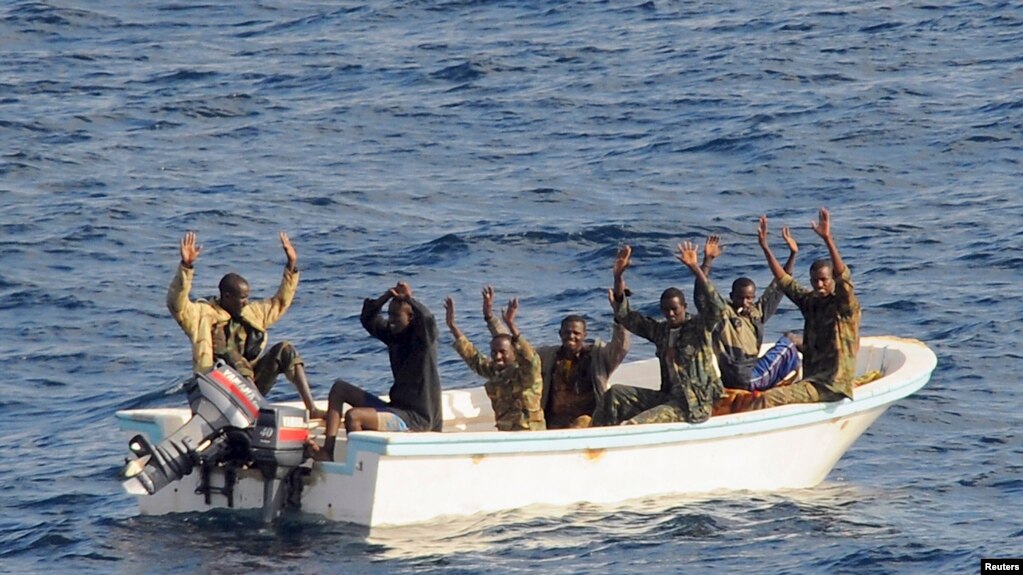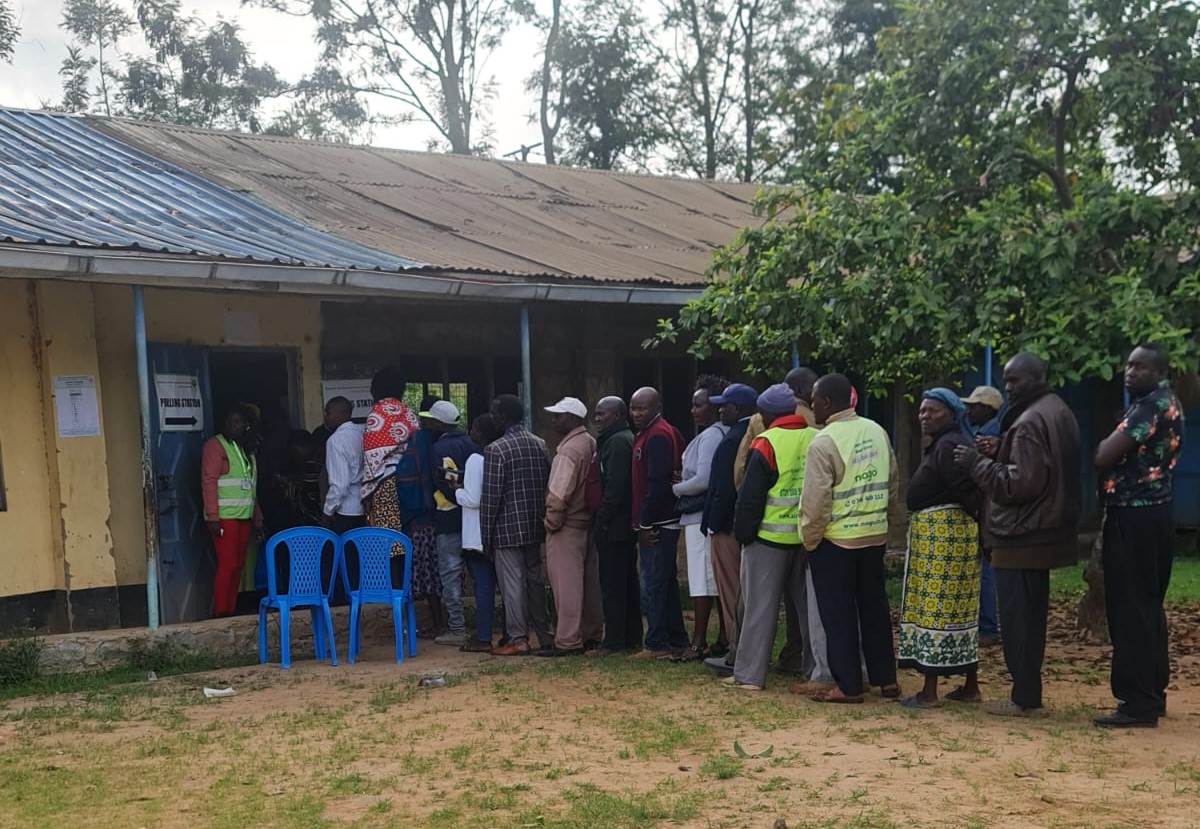Kenya on high alert following resurgence of pirate attacks along Gulf of Aden

The attacks began in November last year when pirates armed with assault rifles and rocket-propelled grenades hijacked the Iranian-flagged fishing vessel, ALMERAJI ending over a decade-long lull in the attacks.
Kenya is on high alert following a resurgence of pirate attacks along the Gulf of Aden triggered, by amongst others the war in Gaza, The Eastleigh Voice has learnt.
The Gulf of Aden lies between southern Arabia and the Horn of Africa and connects with the Red Sea and Indian Ocean. It forms a transition zone between the Red Sea, Southern Arabia and East Africa.
More To Read
- EU, Indian navies take over ship used by pirates off Somalia to seize tanker
- Report links corrupt officials to rising criminal networks in Kenya
- EU deploys warship to track suspected pirate mothership off Somalia
- East African shipping routes on edge after pirates attempt to hijack tanker in Somalia
- Yemen, Somalia hold security talks in Aden to strengthen bilateral cooperation
- China deploys 48th Naval Escort Fleet to Gulf of Aden for anti-piracy mission
The resurgence in pirate attacks began in November last year when pirates armed with assault rifles and rocket-propelled grenades hijacked the Iranian-flagged fishing vessel, ALMERAJI ending over a decade-long lull in the attacks.
Since then, a total of 69 attacks have occurred and 44 suspicious activities recorded, a conference taking place in Mombasa has heard.
"The 69 attacks were carried out using drones and missiles and the other 44 incidents consisted of attempted attacks and suspicious approaches," an official attending the conference revealed.
The Kenya Coast Guard and Kenya Navy are hosting the weeklong Piracy Impact conference in Mombasa that is seeking to enhance multi-agency readiness to respond to incidents and foster cooperation to address maritime crimes and threats covered by the Djibouti Code of Conduct/Jeddah Amendment.
These include; illegal, unreported and unregulated fishing, arms trafficking, trafficking in narcotics, illegal trade in wildlife, theft of crude oil, human smuggling and trafficking and illegal dumping of toxic waste.
"In as much as the attacks have not happened close to the Kenyan waters or in the high seas close to us, there is a need for us to be cautious and alert," the official added.
The exercise further seeks to assess the geopolitical situation in the Area of Operations and seek ways to improve coordination between countries and raise strategies to combat the spread of the attacks beyond the current risky zone.
 Suspected pirates keep their hands in the air as directed by sailors aboard the guided-missile cruiser USS Vella Gulf (CG 72) (not shown), in the Gulf of Aden, February 11, 2009. (Photo: Reuters)
Suspected pirates keep their hands in the air as directed by sailors aboard the guided-missile cruiser USS Vella Gulf (CG 72) (not shown), in the Gulf of Aden, February 11, 2009. (Photo: Reuters)
"The exercise coincides with the visit of the European Union Naval Force (EUNAVFOR)'s Atlanta Ship dubbed "Its Martinengo" at the port of Mombasa, where a demo will be carried out to improve maritime security capabilities, coordination and interoperability," the International Maritime Organisation (IMO) said earlier this week.
The operation was launched in December 2008 at the height of piracy attacks through a United Nations Security Council Resolutions to fight Somali piracy at source.
Peak years
The threat of piracy reached its peak between 2008 and 2014 forcing major interventions including patrols by warships at the Gulf of Aden and the shipping lanes to the Indian Ocean leading out of it.
This eliminated the attacks and eventually, over a decade later, the West Indian Ocean and the Gulf of Aden region was named a safe area and delisted from High-Risk Area (HRA) status in January 2023.
The impact of this was a resumption of large shipping volumes and trade until an attack that happened in November last year elicited what has been a series of attacks targeting vessels belonging to Israel and its allies.
On May 9 this year, Yemen's Houthis claimed responsibility for two missile attacks in the Gulf of Aden on two Panama-flagged container ships; MSC Diego and MSC Gina in an attempt to pressure Israel to end the war in the Gaza Strip.
"The two were likely targeted due to perceived Israeli affiliation" the Joint Maritime Information Centre said and confirmed that all passengers and crew on board were safe.
A day later, Operation Atlanta confirmed a suspicious approach to Chrystal Arctic at 100 NM North of Bosaso, Somalia that triggered an exchange of fire between the security team on the merchant ship and a skiff with suspected pirates on board.
Six pirates were arrested after the incident and handed over to Seychelles authorities after interrogations.
Since November last year, attacks at the Red Sea have reached a record of 133 incidents including more than 14 vessels struck by missiles or drones and 18 vessels hijacked by Somali pirates.
According to EUNAVFOR's Operation Atalanta, the typical pirate strategy involves the seizure and hijacking of a dhow, which is subsequently utilized as their mother ship.
They then blend in with usual traffic and deploy skiffs from the mother ship to attack vessels navigating as far as 600 nautical miles or more, off the East coast of Somalia.
"The possibility of Attacks in the Gulf of Aden (GOA) cannot be dismissed, mainly in the East Side. If the targeted vessel cannot repel the attack, pirates may opt to board the ship. After a vessel is seized, most probably is taken to the Somali coast and held there while ransom negotiations are ongoing," the operation's latest threat update notes.
Top Stories Today















































